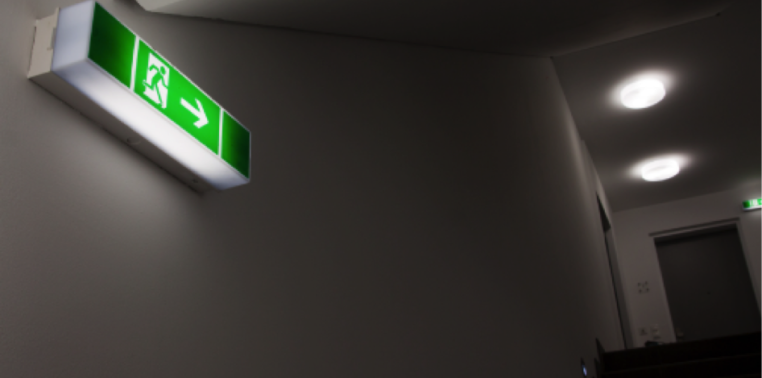
An emergency lighting certificate is a requirement for large commercial buildings according to regulations based on BS 5266-1 2005. Emergency lighting is crucial to any reliable escape route, meaning its maintenance can directly impact the safety of your residents.
One of the more vital roles of running a commercial building is ensuring that there are reliable escape routes available in case of emergencies. An important point of this responsibility is the amount of light available during such times. Emergency lighting is basically a set of lights strategically placed within a building to help people find their way out during emergencies.
Darkness can prove to be a formidable obstacle when people are close to panic, so the importance of emergency lighting cannot be downplayed in the least. The system should be connected to an independent power source, as it’s designed as a backup option when the main lights go out. Once it has been installed, an official inspection by an authorised company is then required before you can get your emergency lighting certificate.
Types of Emergency Lights
You can choose between two primary options when considering the installation of emergency lighting in your premises. These alternatives are categorised according to their source of power and include:
Self-Contained or Single-Point Emergency Lighting
A self-contained emergency lighting system contains all of its vital parts (including the battery, charging system, and ballast) within its body. This makes it self-reliant, meaning it does not depend on an external source of energy. This option is usually presented as a standalone unit and can be combined with luminous directional and exit signs to serve their purpose.
Single-point systems are a preference for small offices that don’t have multiple areas to cover. Choosing this option for a multi-storey building can prove costly, as you would have to purchase a significant number of units to ensure every section has been adequately covered.
Central Battery Emergency Lighting
As the name suggests, a central battery system is connected to a principle independent power source that is located at a different location within the building. In this case, the lighting mechanism (that is, the bulb or lamp) is the only thing that is inside the illuminated boards. The other vital parts of the system are based within the centralised point containing the battery.
These systems are popular with large complexes containing multiple exits on different floor levels. Its centralised system also makes the task of maintenance and inspection easier to handle as there is only one location involved.
Areas that should be covered by Emergency Lighting
The strategic placement of emergency lights is also essential to acquiring your emergency lighting certificate. The lights should be placed at convenient points that can help people locate the exits easily. Some of the areas that should be covered by an emergency lighting system include:




 Request Callback
Request Callback